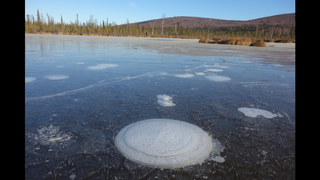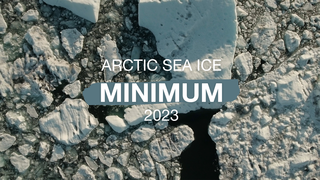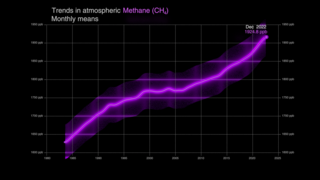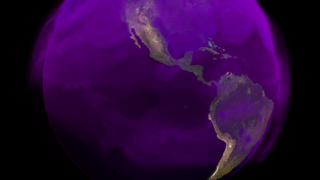Earth
ID: 13047
For centuries, a massive store of carbon has been locked underground in the Arctic's permanently frozen soil known as permafrost. As Earth's climate continues to warm, that carbon has begun to leach into the atmosphere, the result of microbes waking up and digesting once-frozen organic materials.
A new NASA-funded study focuses on a mechanism that could accelerate the release of this atmospheric carbon, the result of thermokarst lakes. These lakes form when thawing permafrost causes the ground to slump, creating a depression that collects rain and snowmelt and perpetuates a cycle of further permafrost thaw.


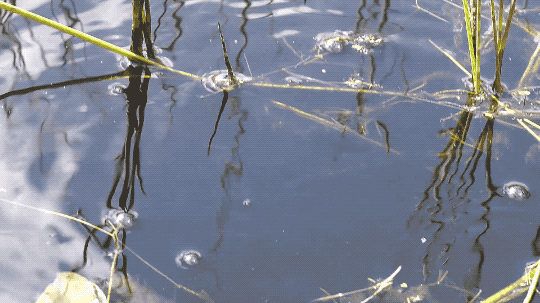
New Arctic Lakes Could Soon Be a Major Source of Atmospheric Methane
A new NASA-funded study focuses on a mechanism that could accelerate the release of this atmospheric carbon, the result of thermokarst lakes. These lakes form when thawing permafrost causes the ground to slump, creating a depression that collects rain and snowmelt and perpetuates a cycle of further permafrost thaw.



Used Elsewhere In
Source Material
Related
Credits
Kathryn Mersmann (USRA): Lead Producer
Ellen T. Gray (ADNET Systems, Inc.): Lead Writer
Jefferson Beck (USRA): Videographer
Katey Walter Anthony (University of Alaska Fairbanks): Lead Scientist
Ellen T. Gray (ADNET Systems, Inc.): Lead Writer
Jefferson Beck (USRA): Videographer
Katey Walter Anthony (University of Alaska Fairbanks): Lead Scientist
Please give credit for this item to:
NASA's Goddard Space Flight Center
NASA's Goddard Space Flight Center
Short URL to share this page:
https://svs.gsfc.nasa.gov/13047
This item is part of this series:
Narrated Movies
Keywords:
SVS >> Climate
DLESE >> Cryology
SVS >> HDTV
SVS >> Methane
GCMD >> Earth Science >> Cryosphere
GCMD >> Earth Science >> Atmosphere >> Atmospheric Chemistry/Carbon and Hydrocarbon Compounds >> Methane
GCMD >> Earth Science >> Cryosphere >> Frozen Ground >> Permafrost
GCMD >> Location >> Arctic
SVS >> Climate Change
NASA Science >> Earth
SVS >> Methane Bubbles
GCMD keywords can be found on the Internet with the following citation: Olsen, L.M., G. Major, K. Shein, J. Scialdone, S. Ritz, T. Stevens, M. Morahan, A. Aleman, R. Vogel, S. Leicester, H. Weir, M. Meaux, S. Grebas, C.Solomon, M. Holland, T. Northcutt, R. A. Restrepo, R. Bilodeau, 2013. NASA/Global Change Master Directory (GCMD) Earth Science Keywords. Version 8.0.0.0.0
https://svs.gsfc.nasa.gov/13047
This item is part of this series:
Narrated Movies
Keywords:
SVS >> Climate
DLESE >> Cryology
SVS >> HDTV
SVS >> Methane
GCMD >> Earth Science >> Cryosphere
GCMD >> Earth Science >> Atmosphere >> Atmospheric Chemistry/Carbon and Hydrocarbon Compounds >> Methane
GCMD >> Earth Science >> Cryosphere >> Frozen Ground >> Permafrost
GCMD >> Location >> Arctic
SVS >> Climate Change
NASA Science >> Earth
SVS >> Methane Bubbles
GCMD keywords can be found on the Internet with the following citation: Olsen, L.M., G. Major, K. Shein, J. Scialdone, S. Ritz, T. Stevens, M. Morahan, A. Aleman, R. Vogel, S. Leicester, H. Weir, M. Meaux, S. Grebas, C.Solomon, M. Holland, T. Northcutt, R. A. Restrepo, R. Bilodeau, 2013. NASA/Global Change Master Directory (GCMD) Earth Science Keywords. Version 8.0.0.0.0
